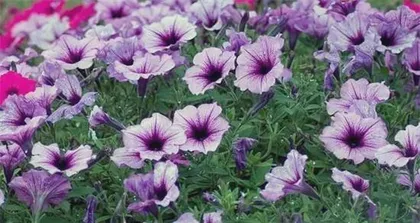Summer has arrived, and the temperature is rising. However, our gardens can look a bit sad, as many plants cannot withstand the high temperatures and wither and wilt. If you want to create a pleasant garden environment, choosing heat-tolerant flowers is very important. In this article, we will introduce in detail the types of heat-tolerant flowers and their care tips.

I. What are heat-tolerant flowers?
Heat-tolerant flowers refer to those that can adapt to high-temperature environments and grow and reproduce normally. These plants usually have deeper roots and thicker leaves, which help reduce water evaporation in high temperatures, thus maintaining their normal growth state.
II. What kind of heat-tolerant flowers are suitable for growth?
1. Crape Myrtle

Crape Myrtle is a very popular heat-tolerant flower that thrives in hot and dry environments. Its flowers are mostly purple or pink and are very beautiful.
2. Marigold
Marigold is a flower that is very suitable for growing in high-temperature environments. Its flower colors are rich and varied, including red, yellow, orange, etc.

3. Prunella
Prunella is a plant that is very suitable for growing in hot and dry environments. Its root system is relatively developed, allowing it to effectively absorb moisture from the soil.
4. Rose
Rose is a very beautiful heat-tolerant flower. Its flowers are mostly red, pink, and other colors, making it very suitable for creating garden landscapes.
5. Dahlia
Dahlia is a very popular heat-tolerant flower. Its flowers are very beautiful with a wide range of color choices.
III. How to care for heat-tolerant flowers?
1. Maintain sufficient moisture
Heat-tolerant flowers need sufficient moisture to grow normally, so they need regular watering, and the frequency of watering should be increased during high-temperature weather.
2. Regular fertilization
Heat-tolerant flowers need adequate nutrients to maintain a normal growth state, so they need regular fertilization. Generally, apply fertilizer once every two weeks during the growing season.
3. Receive sufficient sunlight
Heat-tolerant flowers need sufficient sunlight to grow normally, so it is necessary to choose a suitable location for planting to allow the flowers to receive adequate sunlight.
4. Regular pruning
Heat-tolerant flowers need regular pruning to maintain their normal shape and growth state, so they need to be pruned at the right time to prevent overgrowth.
5. Prevent pests and diseases
Heat-tolerant flowers are susceptible to pests and diseases, so timely prevention and control are necessary. Biological pesticides can be used for prevention and control.
6. Pay close attention
Caring for heat-tolerant flowers requires close attention to their growth status, so that problems can be discovered in time and corresponding measures can be taken.
7. Choose suitable soil
Heat-tolerant flowers need to be planted in suitable soil. Generally, it is necessary to choose well-drained and nutrient-rich soil.
8. Regularly clear weeds
During the growth period of heat-tolerant flowers, it is necessary to regularly clear weeds to keep the garden tidy.
IV.
Heat-tolerant flowers are very suitable for growing in high-temperature environments. Choosing the right species and caring for them scientifically can keep your garden vibrant and full of life even during the hot summer. I hope this article can be inspiring and help you create your garden environment with greater ease.